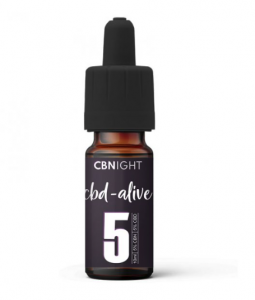Cannabinol is one of the cannabinoids found in the hemp plant. The two best known cannabinoids are cannabidiol and THC (tetrahydrocannabinol). While CBD is legal, THC is still not legal to consume in most European countries. We’ll give you the background on the different cannabinoids and what neuroscience has already found out about them. In addition, you will learn what is special about cannabinol and what properties the cannabinoid has.
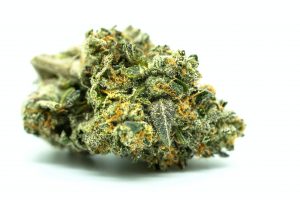
What are cannabinoids?
Cannabinoids are described as a group of pharmacologically relevant substances that have an affinity for human and animal cannabinoid receptors. The best-known cannabinoid variety is THC (tetrahydrocannabinol), which is present as an intoxicating substance in hash and weed. In the past, only the constituents found in the hemp plant Cannabis Sativa L were referred to as cannabinoids, but today neurotransmitters are also included.
One of the best-known neurotransmitters is anandamide, which docks with the human endocannabinoid system in the same way. Since cannabinoids are more and more studied and researched, the desire to produce synthetic cannabinoids is increasing. The efficacy of cannabis in the medical field is more and more proven, today people suffering from diseases can even get THC prescribed by their doctor in some cases.
Research into CBD, a cannabinoid that does not trigger a psychedelic effect, is less advanced. It has been the talk of the town for about ten years and is often described as one of the most potent cannabinoids after THC. But there are far more than just these two prominent name representatives, as has already been confirmed in the Journal of Psychiatry. Around 100 cannabinoids (and counting) are currently known.
What do cannabinoids do?
Cannabinoids are found in the cannabis plant. To be exact, we are talking about the hemp variety Cannabis Sativa. They are chemical compounds that are also found in the human body. Humans (and animals, too) have an endocannabinoid system in the brain, to which cannabinoids can dock. Throughout the body, CB2 receptors and cannabinoid receptors can be found, which may explain the powerful effectiveness of cannabinoids.
In medicine, much research is being done on the use of the hemp plant and the effects of cannabinoids on humans. So far, researchers know that the body has two types of receptors, CB2 receptors on the one hand and CB1 receptors on the other.
CB1 receptors are responsible for a balanced ratio of neurotransmitters in the brain. These are dopamine, serotonin, epinephrine, norepinephrine, and other building blocks that are responsible for the well-being of humans. If there are malfunctions in the nervous system, this can have consequences. For example, reduced serotonin levels are associated with depression in patients.

The CB1 receptor can be directly targeted by cannabinoids. Its function is to regulate neurotransmitters. For this we can give you a small example:
Imagine you are incredibly nervous, although there is no direct reason for it! You can assume that your CB 1 receptor has little dopamine available at this moment, but a lot of adrenaline. Now you add cannabinoids, for example through a CBD oil. The result is stimulation of neurotransmitters and a balancing of the neurotransmitters. You feel less nervous and become calmer.
Numerous symptoms are regulated by the human body’s endocannabinoid system. Nausea and vomiting, epilepsy, anxiety disorders, nervousness and many other symptoms are directly controlled by endocannabinoids. And this is exactly where the explanation of science so far is to be found when it comes to the effectiveness of cannabinoids.

Are cannabinoids drugs?
To answer this question, you must clearly distinguish synthetic cannabinoids from natural substances of the cannabis plant. The mode of action is similar, but the human body only knows the natural cannabinoid! Synthetic cannabinoids are called cannabinoid receptor antagonists. They are similar in potency to δ 9-tetrahydrocannabinol and bind identically to cannabinoid receptors. Their development was actually to produce drugs, however, in recent years, abuse has been frequently shown.
Drugs in the form of synthetic cannabinoids were able to achieve efficacy, but the psychoactive effects could not be suppressed. Then in 2008 came the discovery of Spice, a mixture of cannabinoids in herbs and incense, which is no longer legal. They act similarly to δ 9-THC and were mostly sold through a website on the Internet or through head stores locally.
Although neither cannabis nor tobacco are included, the active ingredients produce an effect similar to THC. And although they are called synthetic cannabinoids, they cannot be directly related to natural cannabinoids and their potency. The properties are completely different, only structural relationship can be demonstrated. One known endogenous substance is oleamide, which is similar in structure to the natural anandamide, but less likely to dock with cannabinoid receptors in the human brain.
So, are cannabinoids drugs or not? Synthetic cannabinoids are offered and sold as “legal highs” on many a dubious website. In illegal stores, the substances are sold in various forms. Since 2016, there has been a general ban on an entire group of substances. All synthetic cannabinoids are included here. Medicine is now focusing its research on natural derivatives, as the psychoactive effect structures of the synthetic variant are too unpredictable.
Is CBD a cannabinoid?
CBD belongs to the cannabinoids and is legal in Germany, Austria, and large parts of Europe. Next to THC, CBD is the most widely known cannabinoid and is also mentioned in the encyclopedias of numerous well-known authors. In the plants there are far more than just the two strongest known cannabinoids. It is estimated that there are around 100 or more different natural substances.
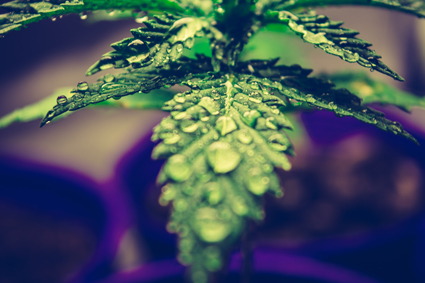
What are natural cannabinoids?
Natural cannabinoids can occur in two ways. On the one hand, the production takes place in the own body, here experts then speak of endocannabinoids. On the other hand, there are cannabinoids that originate from the hemp plant. Due to their natural structure, they can interact with the human brain. Everything that research knows about them so far is focused on CBD and THC. CBN has just recently come into increased focus.
The best-known endocannabinoids produced by the body:
- 2-Arachidonoylglycerol (2 AG): 2 AG is considered an ester of arachidonic acid and glycerol. It activates both the CB1 and CB2 receptors in the human body.
- Anandamide: The quadruply unsaturated fatty acid is found in abundance in the central nervous system and has similar structures to δ 9-THC. The difference is the faster breakdown of anandamide after release in the human body.
- O-arachidonylethanolamide: The endocannabinoid is one of the best known antagonists for CB1 and CB2 receptors.
The best-known cannabinoids of the hemp plant:
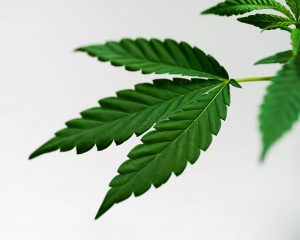
Delta-9-tetrahydrocannabinol:
δ 9-THC is the world’s most researched cannabinoid with a psychoactive effect. In Germany, prescription is already possible for some patients. The mechanism of action is still not fully understood. What is clear, however, is that tetrahydrocannabinol docks onto the CB 1 receptor and the CB2 receptor. This leads to feelings of happiness and relaxation. In medicine, the pain-relieving effect is emphasized above all.
Cannabidiol:
CBD has come into greater focus in recent years. The cannabinoid is not psychoactive and is therefore not subject to the legal narcotics regulation. The origin is the acid CBDA, then by heating the transformation into CBD takes place. In some animal studies, it has already been shown that cannabidiol can be positive for inflammation, pain and psychological complaints. However, much more research is needed before it is released in the form of medication or even for prescription.
Cannabichromes:
Cannabichromene (CBC) has no psychoactive effects and is derived from CBG. To date, it has not been demonstrated whether direct function using cannabinoid receptors is possible. However, it is assumed in research that CBC as a cannabinoid can support the effect of CBD. The so-called entourage effect in full-spectrum CBD products results from the interaction of various cannabinoids and terpenes.
Cannabicylol:
The cannabinoid CBL has been little researched so far. All that is known is that its structure does not completely match that of other cannabinoids. CBL is the degradation product of CBC and it is not known if there can be a therapeutic spectrum of activity for humans. However, the low biological activity suggests that this cannabinoid can at most serve as a support to achieve the entourage effect.
What is CBN?
CBN is a cannabinoid that reached a milestone in 1896. It is the first cannabinoid that could be isolated in pure form. It has long been assumed that the intoxicating state of THC was triggered by CBN.
In research, it is currently believed that cannabinol can also have a positive effect on the human body. Inflammation of organs, pain, and psychiatric disorders are the most important subjects of research. Reports suggest that CBN may also have positive effects on appetite if increased hunger is desired. However, since cannabinol is much less well known than CBD or THC, an accurate assessment of the substance is not yet possible.
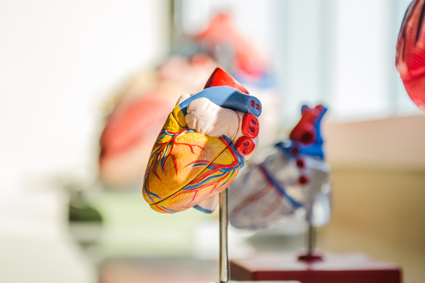

What effect does CBN have?
No exact effects can yet be described about the active ingredient CBN; the substance is too new for that. However, the products are gaining popularity, and more and more items with combinations of CBD and CBN are coming onto the market. It seems to turn out that especially the symbiosis of the two cannabinoids can produce interesting effects. It has long been suspected that CBN could have a sedative effect, but so far this side of the cannabinoid has not been confirmed.
What is the difference between CBN and CBD?
Although CBN and CBD are both derived from the cannabis plant and require the brain’s CB1 and CB2 receptors for their effects, they differ structurally. But the biggest difference is the level of awareness. While even the Journal of Psychiatrics has reported on the cannabinoid CBD, CBN is the unknown component. CBD is widely available, less expensive, and the products have been tried thousands of times by enthusiastic users.
Items with CBN, on the other hand, are an unknown component that can lead to questions. As interest is currently on the rise, more research can be expected in the future.
Is CBN legal?
In the case of CBD, the statement is clear: it is legal and products with this active ingredient may be purchased without any problems. With CBN, there is also no ban on the cannabinoid so far. The United Nations does not list CBN as a controlled substance. CBN is a direct derivative of THC which, however, is not psychoactive. In Europe, THC is still largely banned. Legalization is planned in countries like Germany, but if you look it up in the dictionary, you’ll only find it declared as a narcotic.
So, you are in the green zone with CBN. Here is the big difference to illegal cannabis, which you can’t easily buy anywhere. We don’t expect CBN to be added to the list of banned substances anytime soon after all.
Buy CBN oil - store with us now!
About seven minutes of reading time are behind you and now you are asking yourself the question whether you can buy CBN from us. If you’ve shopped with us before and have your own login, you know our philosophy. We are the cheap and fair discounter for CBD products in the legal framework! And we make no exception for CBN.
You can buy CBN products from us because they are not prohibited. All you have to do is open your browser, visit our store and choose your desired product. Of course, we can’t promise you that our CBN products can stay in our offer permanently. Unfortunately, the extraction and production of CBN is very cost-intensive and time-consuming.
Our goal is that you can store with us without any worries! If you feel like saving a little money now and then, subscribe to our newsletter. Here you will receive not only important information, but also direct information about discount and savings promotions. Don’t worry, you will only receive our newsletter and no other advertising. If you don’t want to receive it anymore, just unsubscribe.

